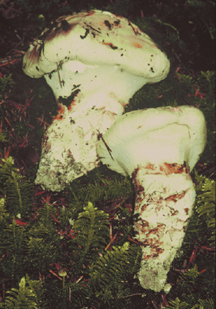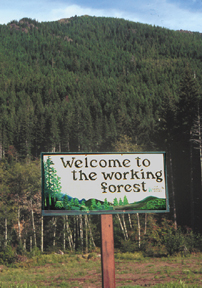

SilviShrooms
Predicting edible mushroom productivity using forest carbon allocation modeling and immunoassays of ectomycorrhizae




Field sites for this proposed research have not yet been
selected. We plan to select field sites that cover the range of
climatic and edaphic conditions that we hypothesize are important
to mushroom productivity. Factors driving site selection will
include:
In addition to sites in the Pacific Northwest where C.
formosus, C. subalbidus, and T. magnivelare
will be sampled, we currently anticipate locating additional sites
in Sweden where C. cibarius and T. nauseosum (syn.
T. matsutake) will be sampled. [See Mushroom
Species for more detail.] Actual carbon budgets will be calculated
for each site, annual mushroom productivity will averaged over
3+ years, and site occupancy calculated by one or more of the
methods described [See Site Occupancy].
The amount of  carbon
allocated below ground to fine roots and mycorrhizae will be modified
by the percentage occupancy of chanterelles or matsutake and then
correlated with average mushroom productivity recorded on the
site. The correlations we develop and the predictions of our resulting
model will be tested on other sites where long-term mushroom productivity
estimates already exist. For example, the Young
Stand Thinning and Diversity Study has 12 stands where
chanterelle productivity has been sampled for 5+ years. We also
have at least 9 other sites in the Pacific Northwest where 2+
years of chanterelle or matsutake productivity have been sampled
and where the model's predictions could eventually be tested.
Colleagues elsewhere around the world could easily test and adapt
the model to local forests.
carbon
allocated below ground to fine roots and mycorrhizae will be modified
by the percentage occupancy of chanterelles or matsutake and then
correlated with average mushroom productivity recorded on the
site. The correlations we develop and the predictions of our resulting
model will be tested on other sites where long-term mushroom productivity
estimates already exist. For example, the Young
Stand Thinning and Diversity Study has 12 stands where
chanterelle productivity has been sampled for 5+ years. We also
have at least 9 other sites in the Pacific Northwest where 2+
years of chanterelle or matsutake productivity have been sampled
and where the model's predictions could eventually be tested.
Colleagues elsewhere around the world could easily test and adapt
the model to local forests.
Current iterations of the 3PG model are designed to work with forest stands of a single tree species and uniform age. Given that the most abundant fruiting of chanterelles and matsutake often occurs in young stands, early versions of our modified model might be most applicable to recently regenerated forest stands that have timber production as one of their goals. Future revisions of the 3PG model are likely to incorporate multiple tree species of nonuniform age. We hope to use tree species ratios (host/nonhost tree species for each EM fungus) and dominance by those tree species (photosynthetic capacity) to modify our predictions of the amount of carbon allocated to the mushroom species of interest. These versions of the SilviShroom/3PG model would then be more applicable to natural or diverse forest stands.